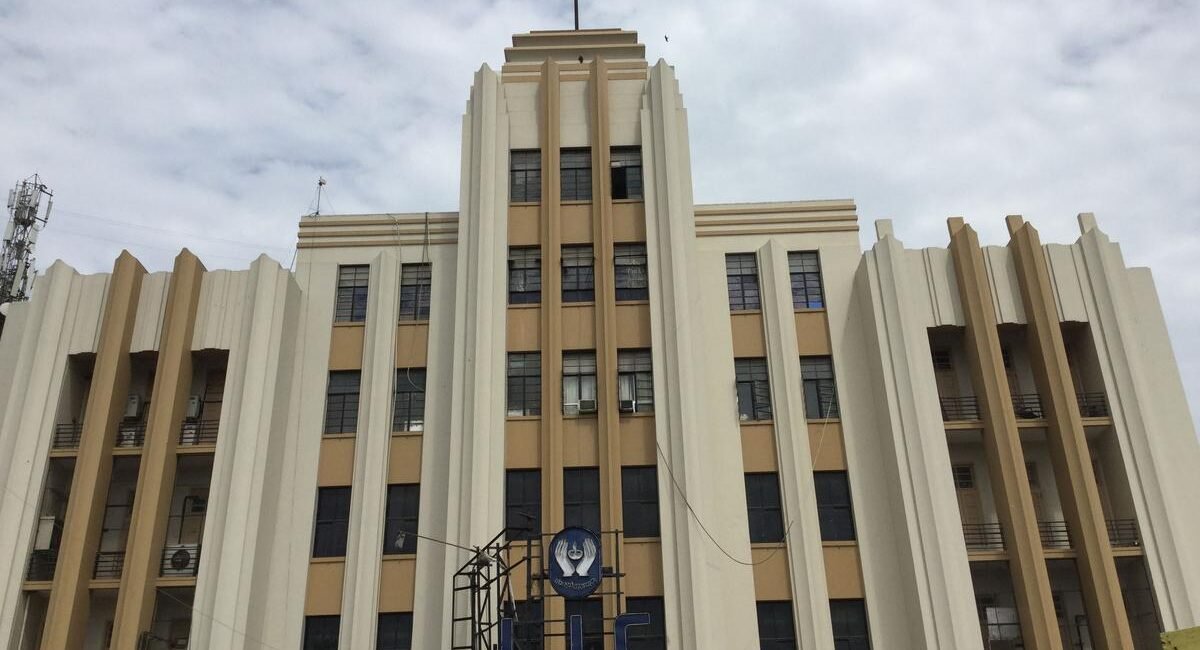
Icon of Art Deco: The United India Building, facing the Law College, came up on what was then known as the South Esplanade. This building now houses the offices of
LIC.
| Photo Credit: V. Sriram
It was on May 6 that I wrote about the Art Deco style completing a century across the world. I was not quite prepared for the flood of emails, comments, and calls that followed, recalling one or the other of the splendid examples of that architectural style we had in this city. I am taking up one of the threads which began with an observation of mine in that article, namely that many insurance company promoters seemed to have preferred Art Deco for their offices and headquarters. Sivasankar Chander sends me an email reminding me of the United India Building on South Esplanade, which now houses the offices of LIC.
Long before his name became permanently linked with the iconic LIC Building on Mount Road, though he tragically did not live to see its completion, M.Ct.M. Chidambaram Chettyar (yes, that is how he spelt it) had conceptualised and built another building, this one an Art Deco icon.
‘Favourite builder’
The United India Building, facing the Law College, came up on what was then known as the South Esplanade and now simply the Esplanade. The architect was not Ballardie, Thompson & Mathew as Sivasankar writes, but Kaval Lal Mehta, who was M.Ct.M’s “favourite builder”, as S. Muthiah writes in his book Unfinished Journey: The Story of M Ct M Chidambaram Chettyar. The building, when completed, was truly Art Deco and happily remains one, though I wish something could be done about its poorly maintained interiors.
A landmark
Sivasankar writes of how the Art Deco designed offices for insurance seemed to have inspired the residences of those involved in the business. Certainly, M.Ct.M.’s second residence in the city, Bedford Villa in San Thome, is all Art Deco. And, as Sivasankar says, so was the residence of S.T. Sadasivan, a man who played key roles in insurance and banking. That house, which was for long a landmark on Brihadambal Street (who was she?) at Nungambakkam, has been replaced by a high-rise, he says. But he has sent two photos, one of its exterior, and the other, more importantly, of its interior, which was also faithful to the Art Deco style.
Sadasivan began his career in Central Bank of India, and when M.Ct.M. began the Indian Overseas Bank, was hand-picked to be its General Manager. He was a director on the board of United India Fire and General Insurance Company when M.Ct.M. began it in 1938, the older United India Life having started in 1922 and been taken over in 1924 by M.Ct.M.’s father Sir M.Ct. Muthiah Chettiar. Sadasivan wound up his career by joining the then Birla-run United Commercial Bank.
It covered all
Going back to the house on Brihadambal Street, the pictures make it clear that Art Deco was not just a façade when it came to India. Interiors too were faithful to the style, and this extended to furniture design in a big way. Why, even silverware had elements of it.
But, even then, modernism was making inroads, it having replaced Art Deco, which had a good run for two decades at best. When M.Ct.M. dreamt big and conceptualised his United India Building on Mount Road in 1953, he turned to Brown & Moulin, an architect’s firm from the U.K. When it was completed in 1959 in modernist style, the world had changed. M.Ct.M. had died in 1954 in an air crash in Singapore, aged 46. Insurance was nationalised in 1956 and so it was as LIC Building that the structure came to be known.
(V. Sriram is a writer and historian.)
Published – May 27, 2025 09:56 pm IST




No Comment! Be the first one.